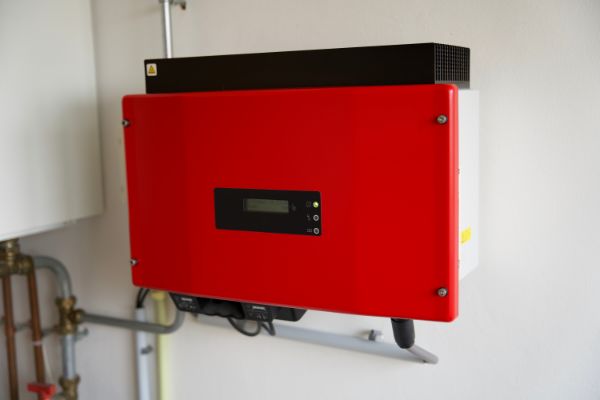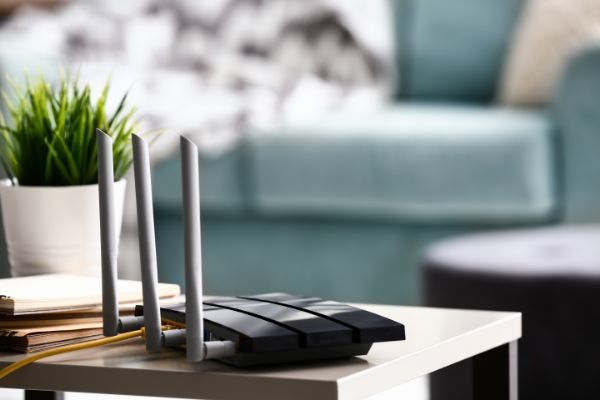Disclaimer: This post may contain affiliate links, meaning we get a small commission if you make a purchase through our links, at no cost to you. For more information, please visit our Disclaimer Page.
The modem and router are probably the two most basic pieces of hardware that most people will use in order to set up internet access in their homes. You can get these two components combined into one device, but it is quite common to see both the router and modem set up near each other in any home environment.
Typically, the internet service provider of your choice will bring you the modem when the company’s technicians come to your home, and the device provides you with physical access to the signal that the ISP will send out.
This signal is what brings the internet into your home. Once there, the router looks for and grabs that signal. This unit can distribute the signal wirelessly throughout your home, enabling many devices to connect to the internet at once.
The power supply is one of the most important parts of any computer system, and an inverter is one aspect of this supply. All computers need an inversion process in order to run when you plug them in to your main power outlet.
However, this process tends to be the opposite of what most people think of when they consider inverters themselves. In a typical computer system, the power supply will invert higher voltage forms to lower ones that are safer for the machine to use.
Today, we’ll talk about whether you can use this same kind of system for a router and a modem. As we dive in, we’ll discuss some of the general uses of an inverter. We can also try to troubleshoot why your internet components may not seem to work well when you pair them with an inverter, and we’ll try to give some tips on what size of inverter might be best for your needs.
Table of Contents
What’s the Purpose of an Inverter?
Generally, an inverter will convert one form of a power source to another type for use in different applications or machines.
If we limit our discussion to computers and similar hardware, an inverter takes a low-voltage DC current and changes it over to an AC mains power current.
In fact, this is the opposite of a typical computer power supply unit. The power supply in a computer first needs to change the AC mains power into DC power at voltages that the components inside the machine can handle.
That said, inverters that companies develop for appliances and electronics can be very handy with computers and their power needs. Before diving into the inverter’s specifics, we need to distinguish it from the uninterruptible power supply.
These two units do many of the same things for your household appliances, but how they operate can differ.
An uninterruptible power supply is a special kind of battery into which you might plug your computer system. Many people do this to get around possible problems with power cuts and outages.
This kind of power supply should have enough energy to keep your devices on for several minutes. You can think of them as temporary batteries that manufacturers design in order to get around the worst parts of a power cut.
Many power cuts or outages do not last for long, and most users hope they’ll only need to use the energy from a UPS for a short time.
The main draw of the uninterruptible power supply isn’t necessarily how long it keeps things working, though. Users appreciate that the UPS can switch on to power devices almost instantly.
With computers, this means there is little chance of an accidental shutdown or data loss. In short, you should be able to save your work and shut down the device normally if necessary.
Inverters that can power your things operate on much the same principle as a power supply as described above. However, users prefer them for greater power needs than the UPS might address.
In general, a dedicated uninterruptible power supply is a good option for your computer itself. On the other hand, an inverter might be a better choice if you need to power many devices or a whole home. This is particularly true if you need to rely on that power for longer than a few minutes.
Can You Use an Inverter for Modem & Router?
Yes, you should be able to use an inverter to power a modem or router setup.
Inverters can be a good option when you need stable power during an outage, and your modem and router represent two pieces of hardware that might be crucial to you during these times.
If you need online connectivity for work, you can still get it with an inverter, and you should have it for at least long enough to save your work and perform a few operations.
Furthermore, this should be true even if you need to supply other hardware and appliances in your home with power.
Most routers and modems only need a few watts of power in order to run. Conversely, you can purchase inverters that manufacturers make in order to provide several hundred watts of power for a particular duration.
Although there is a bit more that goes into all of this, you would need to account for everything that you’d like to attach to the inverter.
Doing this bit of work beforehand can help you decide on which model of inverter might be right for your needs.
Your inverter needs to be able to handle the modem, router, and anything else you might plug in to it. Therefore, the total wattage you are using cannot exceed the output the inverter can provide to your devices.
If you keep this in mind, you should be able to run your internet hardware off an inverter when you don’t have access to other forms of power.
Why Won’t a Modem & Router Work on an Inverter?
Although inverters should be fine with running your router, modem, or similar hardware most of the time, there is always the possibility of problems cropping up.
In this section, we can try to figure out some of the most common reasons your internet hardware does not seem to work when you try to run it off an inverter.
1. The circuitry in some inverter models can be sensitive to the parts inside a modem or router.
Sometimes, the circuits might resonate at frequencies that can cause interference with the signal that you are trying to get over Wi-Fi. If you aren’t getting a stable internet connection with your devices turned on, this might be one of the causes.
2. On a related note, the inverter may be too close in physical proximity to the router.
While routers and modems should stay close together for the best results, an inverter that is too close can contribute to more interference. Try to keep the inverter as far away from your internet hardware as is reasonable.
3. It is possible that you didn’t ground your inverter properly. Grounding devices like these helps to make sure that things are more stable.
With the amount of interference that an inverter has the potential to produce, grounding the unit may be essential to ensuring that your internet hardware can receive proper signals.
If you do need to ground the unit, make sure it is completely off before you do so.
4. If you exceed the voltage specifications on the power adapter, the inverter may not be able to power the internet hardware properly. In rarer cases, it could lead to the voltage issues causing damage to the devices.
What Size Inverter Do I Need To Run Modem & Router?
For our purposes, we’ll assume that you only need an inverter to run a modem and a router. However, most people choose to use them for significantly greater power needs.
If you do plan to use an inverter for other things, you just need to make sure that it has ample enough wattage. Fortunately, most modems and routers together do not need much power to run well.
Each device might need watts in the double digits when you put them together. However, many reasonable inverters on the market can continuously supply at least a few hundred watts of power.
For the best results, you should look at the power requirements for the specific make and model of the modem or router you might want to power.
Conclusion
Stable and continuous internet connectivity is a must for many businesses or homes. If you are concerned about ensuring your modem or router can get all the energy they need, a good inverter might be the best choice for your needs.
There are some things to watch out for before you set up your inverter. For the most part, it is important that you make sure the device doesn’t interfere with your Wi-Fi signal. However, the inverter is still a good way to get some peace of mind regarding your online presence.


